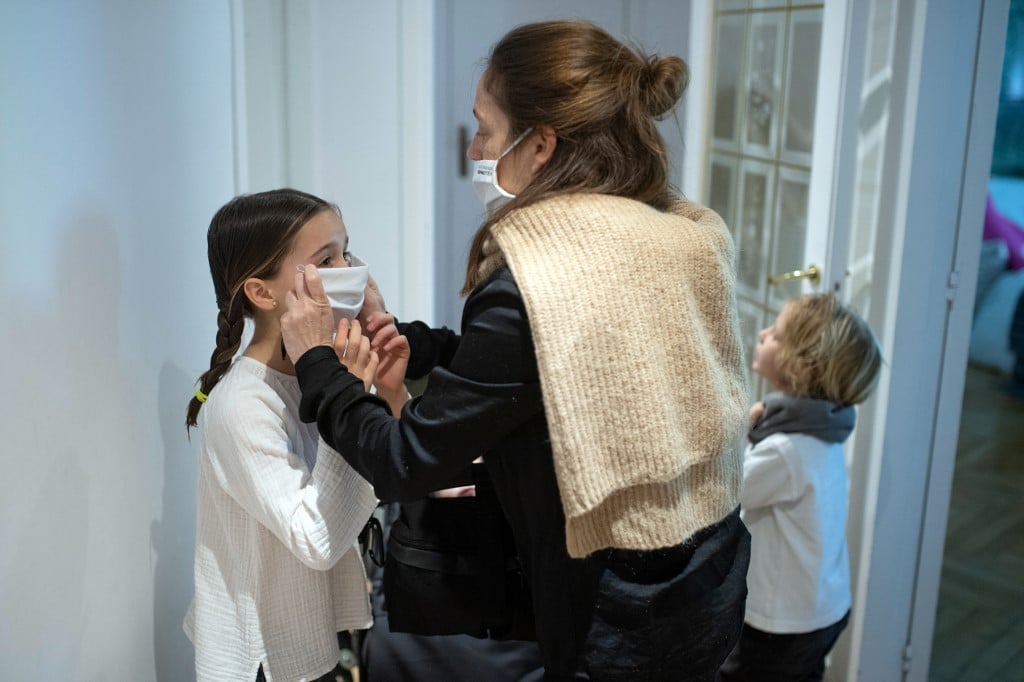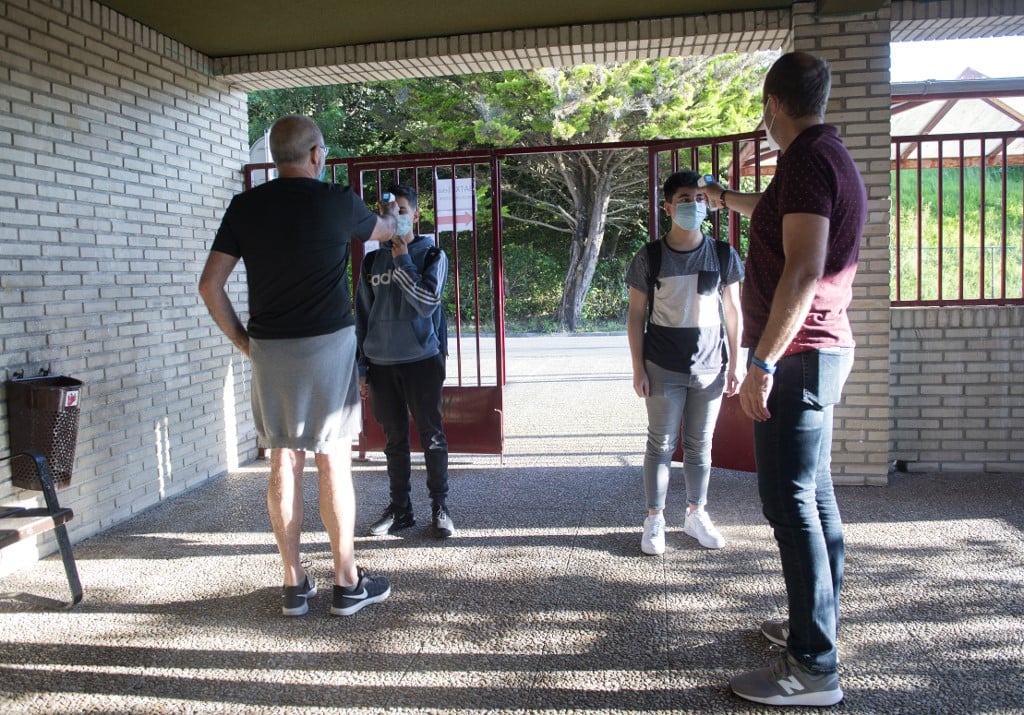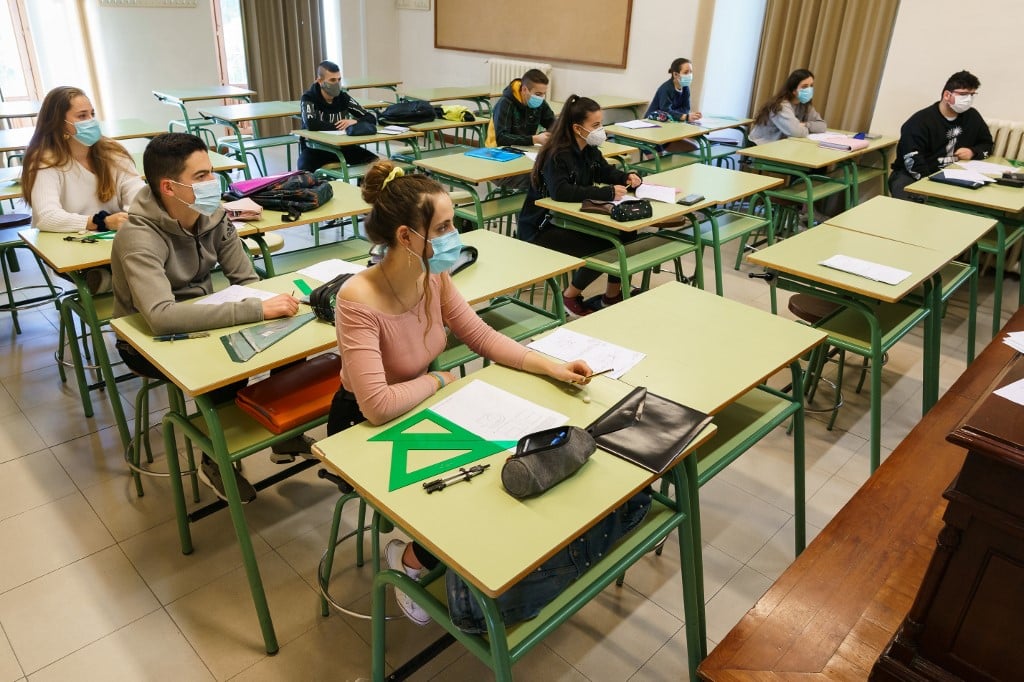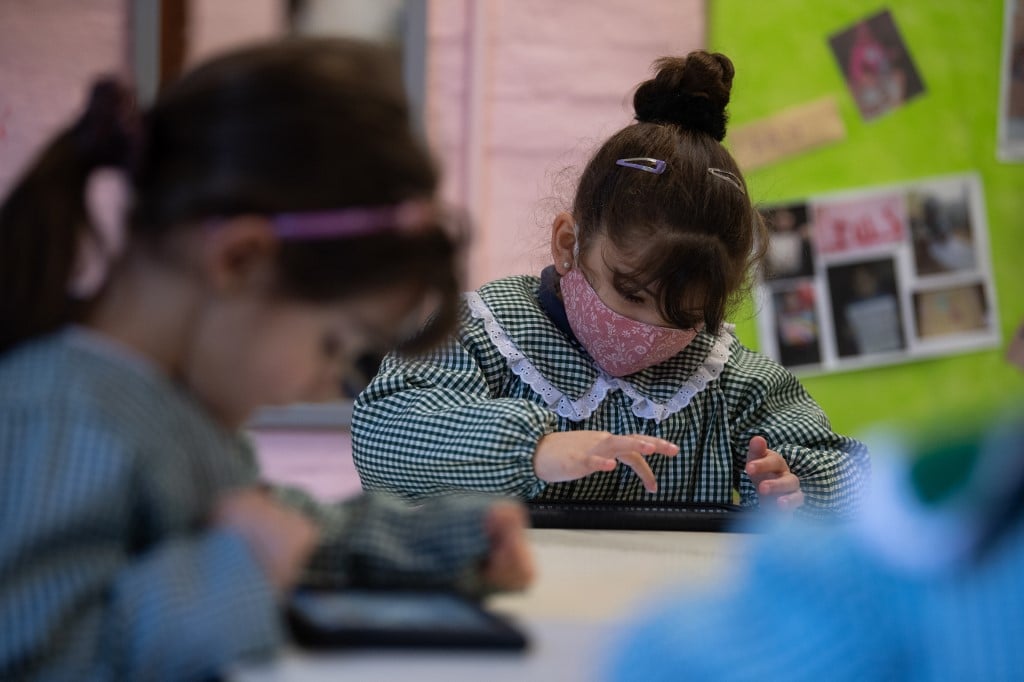Back to school: How Spain is battling to keep its students safe

The new school year is fast approaching and Spain is battling to come up with a strategy to keep its students safe as infections rise across Spain.
Spain’s education chiefs are meeting on Thursday to discuss strategy ahead of reopening the schools at the start of the school year but with 17 regions, each coping with diverse situations of the coronavirus evolution, and with infection rates high in some towns and virtually non-existent in others, it isn’t going to be easy to come up with solutions that suit everyone.
All agree on the importance of getting children back into schools and on track with their education while ensuring classrooms and the school environment are made as safe as possible, that contact is to be limited and hygiene standards maintained.
Guidelines were produced by the central government in June in order to assist regional authorities come up with their own return to school plans, but with the second wave hitting Spain earlier than anticipated and infections on the rise, the plans need updating.
Some regions have already outlined strategies, and others have yet to come up with definitive plans.
Strategies are in place to limit classroom sizes, create ‘bubbles’, and ensure procedures are in place when an outbreak is discovered.
Here’s what is under discussion:
Face masks for children
Under recommendations by Spain’s health ministry face masks should be mandatory for all children aged 6 years old and above when walking around school, but once in the classroom itself the rules change.
Some regions are suggesting that these could be removed when seated at a desk in the classroom as long as students can remain 1.5metres apart, while those who are being taught in “student bubbles”, will be able to move freely around the classroom and interact without masks.
One town in the Seville province, El Rubio, has used funds that would have been spent on the town fiesta to instead invest in Perspex screens placed around individual desks at the local school of 250 pupils.

Mass testing
Galicia, Andalusia and Catalonia have all announced plans to carry out mass testing of teachers and pupils, with Catalonia putting aside funds for half a million tests between the start of the school year and November.
This idea isn’t one that has the support of Spain’s Health Ministry which says it is an expensive measure that is not particularly affective unless the tests are carried out regularly.
Fever checks

Likewise there is some discussion over the usefulness and practicality of taking each student’s temperature on arrival at school. Although running a temperature is one of the most common symptoms of Covid-19, using a thermometer won’t detect the virus in those who are asymptomatic, as many children are.
But it would likely cause crowding at entranceways to the school as children line up to have their temperatures taken.
Some regions will insist on parents agreeing to take the temperatures of their children before they leave the house and to keep them away from school if they show any symptoms of illness.
Smaller class sizes

Recommendations agree by the Education and Health Ministries include the need for smaller class sizes between 15 and 20 which they call “student bubbles” and for class to remain together rather than swap groups and classrooms.
Mixing outside the classroom should also be limited to these “bubbles” which means staying together in the canteen and playground.
In situations where this can’t be observed – such as among older groups who may need to move between classes – then a minimum distance of 1.5 metres must be maintained.
Staggering starts
Some of the regions have already announced plans to stagger the start of the school year depending on year group.
Madrid has set five dates to return to school depending on the year group with those in “infantil” returning on September 4while some secondary school years will have to wait until September 18th.
El inicio de las clases de #EducacionPrimaria:
- 8 septiembre: 1, 2 y 3
- 17 septiembre: 4, 5 y 6
La #VueltaAlColeSegura se hará con clases presenciales, reorganización de espacios (mamparas donde no sea posible otros espacios) y uso obligatorio de mascarillas. pic.twitter.com/N5PkwtHwbx
— Educación Comunidad de Madrid (@educacmadrid) August 25, 2020
Split timetables
Some regions are already outlined plans to combine school attendance with online learning. Madrid, Valencia and La Rioja have said that they will put in place a system that will involve some learning from home for those in secondary schools.
While Murcia indicated already that for those schools where class sizes exceed 20 pupils a combined school/home teaching system will be in place.
Isolation of students with suspected covid
Recommendations outline the need for a dedicated isolation space where a child can be taken if they appear to show symptoms of the virus. They will be cared for here while the health authorities are contacted and the family can take responsibility.
There is still discussion over what to do when a case has been identified. Some regions (Catalonia, Andalusia, La Rioja) suggest that when a case has been identified the whole class, including its teachers, must also remain in isolation until they can take a test.
Covid co-ordinators
Each school will appoint a “covid co-ordinator” to oversee measures within the school and to communicate with the local health and education authorities in the case of corovavirus being detected in the school
Limited playtime and lunch time

Some schools may choose to close canteens and restrict outdoor play to limit the risk of contagion. In Navarra, lunch rooms won’t be operating and all extra-curriculum classes are cancelled.
READ MORE:
Comments
See Also
Spain’s education chiefs are meeting on Thursday to discuss strategy ahead of reopening the schools at the start of the school year but with 17 regions, each coping with diverse situations of the coronavirus evolution, and with infection rates high in some towns and virtually non-existent in others, it isn’t going to be easy to come up with solutions that suit everyone.
All agree on the importance of getting children back into schools and on track with their education while ensuring classrooms and the school environment are made as safe as possible, that contact is to be limited and hygiene standards maintained.
Guidelines were produced by the central government in June in order to assist regional authorities come up with their own return to school plans, but with the second wave hitting Spain earlier than anticipated and infections on the rise, the plans need updating.
Some regions have already outlined strategies, and others have yet to come up with definitive plans.
Strategies are in place to limit classroom sizes, create ‘bubbles’, and ensure procedures are in place when an outbreak is discovered.
Here’s what is under discussion:
Face masks for children
Under recommendations by Spain’s health ministry face masks should be mandatory for all children aged 6 years old and above when walking around school, but once in the classroom itself the rules change.
Some regions are suggesting that these could be removed when seated at a desk in the classroom as long as students can remain 1.5metres apart, while those who are being taught in “student bubbles”, will be able to move freely around the classroom and interact without masks.
One town in the Seville province, El Rubio, has used funds that would have been spent on the town fiesta to instead invest in Perspex screens placed around individual desks at the local school of 250 pupils.

Mass testing
Galicia, Andalusia and Catalonia have all announced plans to carry out mass testing of teachers and pupils, with Catalonia putting aside funds for half a million tests between the start of the school year and November.
This idea isn’t one that has the support of Spain’s Health Ministry which says it is an expensive measure that is not particularly affective unless the tests are carried out regularly.
Fever checks

Likewise there is some discussion over the usefulness and practicality of taking each student’s temperature on arrival at school. Although running a temperature is one of the most common symptoms of Covid-19, using a thermometer won’t detect the virus in those who are asymptomatic, as many children are.
But it would likely cause crowding at entranceways to the school as children line up to have their temperatures taken.
Some regions will insist on parents agreeing to take the temperatures of their children before they leave the house and to keep them away from school if they show any symptoms of illness.
Smaller class sizes

Recommendations agree by the Education and Health Ministries include the need for smaller class sizes between 15 and 20 which they call “student bubbles” and for class to remain together rather than swap groups and classrooms.
Mixing outside the classroom should also be limited to these “bubbles” which means staying together in the canteen and playground.
In situations where this can’t be observed – such as among older groups who may need to move between classes – then a minimum distance of 1.5 metres must be maintained.
Staggering starts
Some of the regions have already announced plans to stagger the start of the school year depending on year group.
Madrid has set five dates to return to school depending on the year group with those in “infantil” returning on September 4while some secondary school years will have to wait until September 18th.
El inicio de las clases de #EducacionPrimaria:
— Educación Comunidad de Madrid (@educacmadrid) August 25, 2020
- 8 septiembre: 1, 2 y 3
- 17 septiembre: 4, 5 y 6
La #VueltaAlColeSegura se hará con clases presenciales, reorganización de espacios (mamparas donde no sea posible otros espacios) y uso obligatorio de mascarillas. pic.twitter.com/N5PkwtHwbx
Split timetables
Some regions are already outlined plans to combine school attendance with online learning. Madrid, Valencia and La Rioja have said that they will put in place a system that will involve some learning from home for those in secondary schools.
While Murcia indicated already that for those schools where class sizes exceed 20 pupils a combined school/home teaching system will be in place.
Isolation of students with suspected covid
Recommendations outline the need for a dedicated isolation space where a child can be taken if they appear to show symptoms of the virus. They will be cared for here while the health authorities are contacted and the family can take responsibility.
There is still discussion over what to do when a case has been identified. Some regions (Catalonia, Andalusia, La Rioja) suggest that when a case has been identified the whole class, including its teachers, must also remain in isolation until they can take a test.
Covid co-ordinators
Each school will appoint a “covid co-ordinator” to oversee measures within the school and to communicate with the local health and education authorities in the case of corovavirus being detected in the school
Limited playtime and lunch time

Some schools may choose to close canteens and restrict outdoor play to limit the risk of contagion. In Navarra, lunch rooms won’t be operating and all extra-curriculum classes are cancelled.
READ MORE:
Join the conversation in our comments section below. Share your own views and experience and if you have a question or suggestion for our journalists then email us at [email protected].
Please keep comments civil, constructive and on topic – and make sure to read our terms of use before getting involved.
Please log in here to leave a comment.